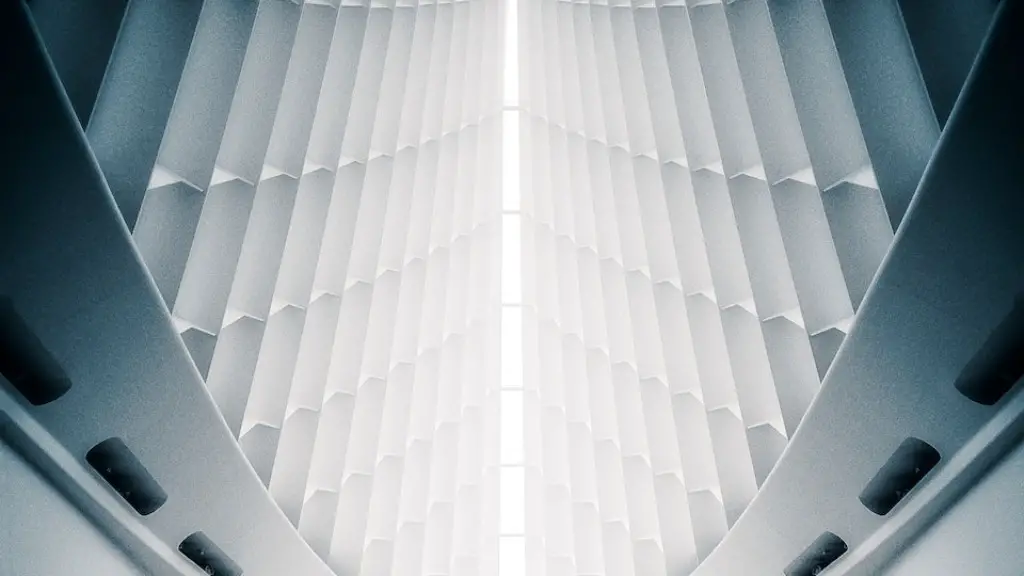We are surrounded by it in every step we take in the city, but what truly is the foundation of architecture- that particularly makes it stand out from other forms of engineering? Is architecture an art or a science? Ever since its humble beginnings, there has been a constant debate as to whether architecture should be considered a form of art or a structural practice.
Today, it is widely recognized as both an art and a science. Although articles of architecture are created for practical purposes, we can also perceive these objects as aesthetic forms; a combination of both the artist and the engineer. It is the marriage of the two disciplines that truly distinguishes architecture from any other form of engineering and gives it a sense of uniqueness.
It is the creative aspect of architecture that leads to the creation of structures that are neither purely art nor science, but rather a combination of both. Buildings, bridges and monuments, after all, must not only be beautiful and aesthetically pleasing, but also functional, safe and adhere to standards set out by governing bodies.
The Importance Of Culture And History In Architecture
Culture and history are integral parts of architecture.The context in which architectural structure are built, the methods and materials used, have all been informed by cultural trends and changes.Builders have always made use of techniques and traditions from the past and absorbed them into modern practice.The shape and form of architecture can be traced back to prehistoric times and can tell us a great deal about the history of a society and its people.
Architecture also tend to reflect the values of a certain period in time, especially when it comes to religious and civic buildings. Poignantly, some architects believe that the art of architecture is closely related to soul and spirit; components that can make a building far more than just a structure. Indeed, it may be argued that architecture is ultimately a work of art, a reflection of a period or culture, and a unique physical manifestation of the inner-most soul and spirit of a time, place, or people.
Design As An Artistic Language
Architecture also has an artistic language that can be expressed through symbols, colors, geometry and form. Aesthetics are essential in architectural design, as they can have a profound impact on how we experience a space. Designers use their creative skills to create buildings that evoke emotion, and show a deep understanding of humanity and its relationship with physical structures.
The introduction of computers and new software has given architects and designers even more opportunities to maximize the aesthetic potential of their projects and has given them a platform to create shapes and forms that push the boundaries of traditional architecture.
The Role Of Aesthetic Concerns In Architecture
It is important to note that the relationship between aesthetic concerns and practicality is not always perfectly balanced. In other words, there are those architects and designers who focus purely on the aesthetic side of design and neglect practical matters. This can lead to the creation of structures that are beautiful but not very functional or safe.
On the other hand, there are those architects and designers who focus solely on practicality and neglect the aesthetic aspect of architecture. While these structures may be highly functional, they often lack the creative flair and unique character that makes a structure truly great. It is, thus, important to strike a balance between aesthetic concerns and practicality.
Architecture As An Expression Of Creativity
In essence, architecture is the balance between functionality and creativity, a blend of art and science, a medium for expressing an individual’s artistic sensibilities, a representation of a certain era or culture, and a language of symbols and forms. All of these elements create a unique physical structure that speaks to us in more ways than one.
At its core, architecture allows us to communicate our creative ideas to the public, while also providing practical benefits. It is the perfect medium to express our emotions, thoughts, and feelings in a unique physical form that combines the form and function of a structure.
The Role Of The Environment In Architecture
Finally, architecture is also closely tied to its environment. Buildings, bridge and monuments are all constructed within the context of a certain environment, whether it is a forest, a desert, or an urban landscape. It is important for the architect to take into consideration the local environment, as well as the needs and desires of the people, when designing a project.
A successful design must, thus, encapsulate the elements of the environment in which it is built, as well as being a reflection of the people who will live in it. When achieved, a building can become incredibly beautiful, functional and successful from both an artistic and functional standpoint.
The Impact Of Globalization On Architecture
With globalization, the world has become much smaller, and architecture has become more accessible to people around the world. The introduction of digital media has allowed architects and designers to share their work with an international audience, while also giving people the opportunity to explore new and innovative design concepts. As a result, the boundaries between nations, cultures, and architectural styles have been blurred, creating a new era of global architecture that is both exciting and diverse.
Globalization has also enabled architects to access a wide range of resources, materials, and techniques that they would not have been able to access before. This has allowed them to experiment and push the boundaries of traditional architecture, creating stunning and innovative structures.
The Role Of Technology In Architecture
Finally, technology has also revolutionized the architectural world, allowing architects to design faster, better and more efficient structures. With the introduction of computer-aided design, architects have been given the tools to create highly efficient, complex and beautiful structures.
Computer-aided design has also allowed architects to simulate a structure in a virtual space, allowing them to anticipate any potential problems and adjust their designs accordingly. This has revolutionized the way architects design and build structures, giving them the confidence to push the boundaries of traditional architecture.
The Future Of Architecture
On the whole, it is clear that architecture is a unique blend of both art and science. It is the creative, artistic potential of architecture that truly sets it apart from any other form of engineering and makes it truly unique.
As technology continues to evolve, it is likely that new trends and design concepts will continue to emerge and that the boundaries between art and engineering will become increasingly blurred. It is, thus, exciting to consider what the future of architecture holds and how it will shape our world in the years to come.




